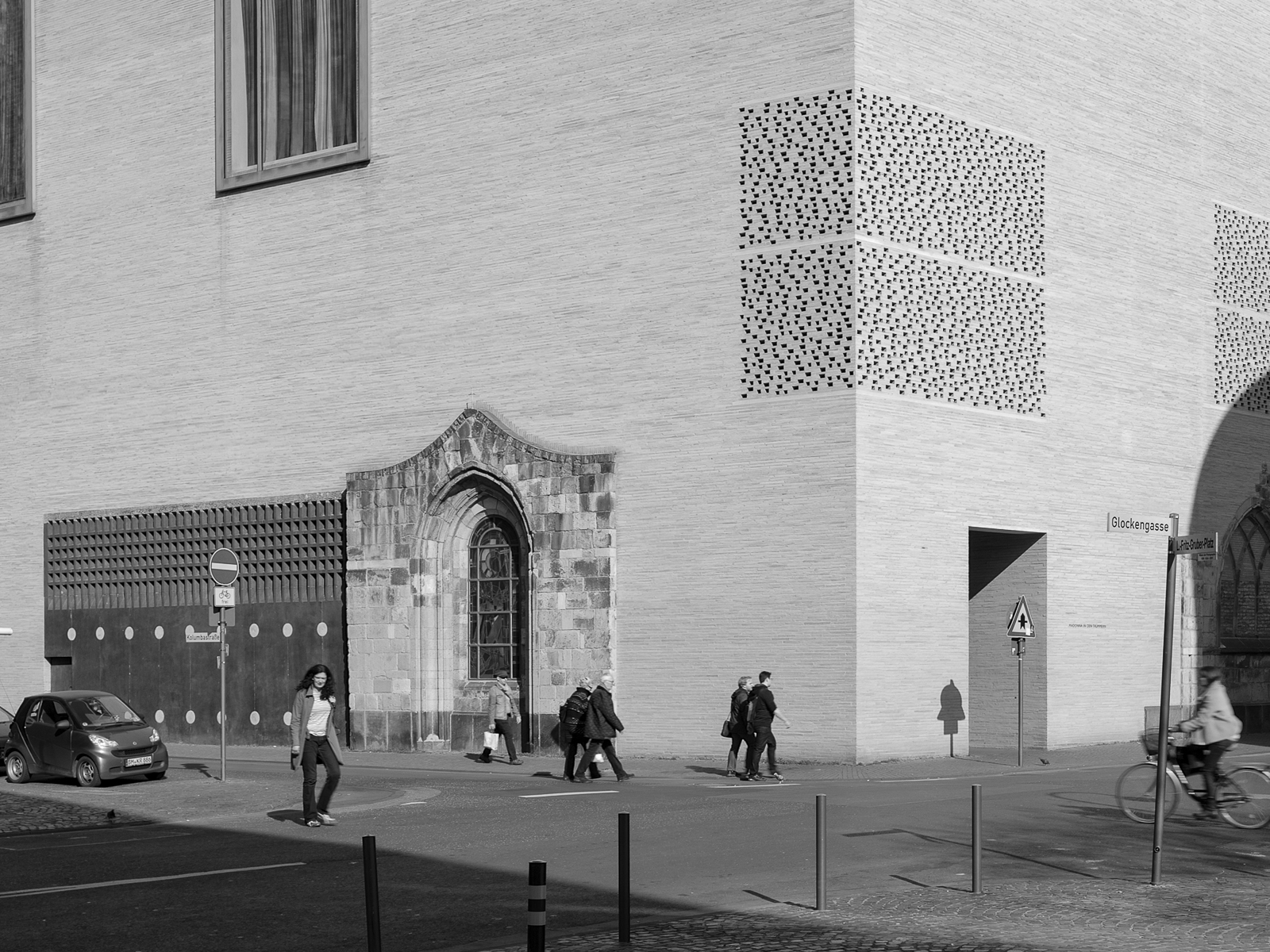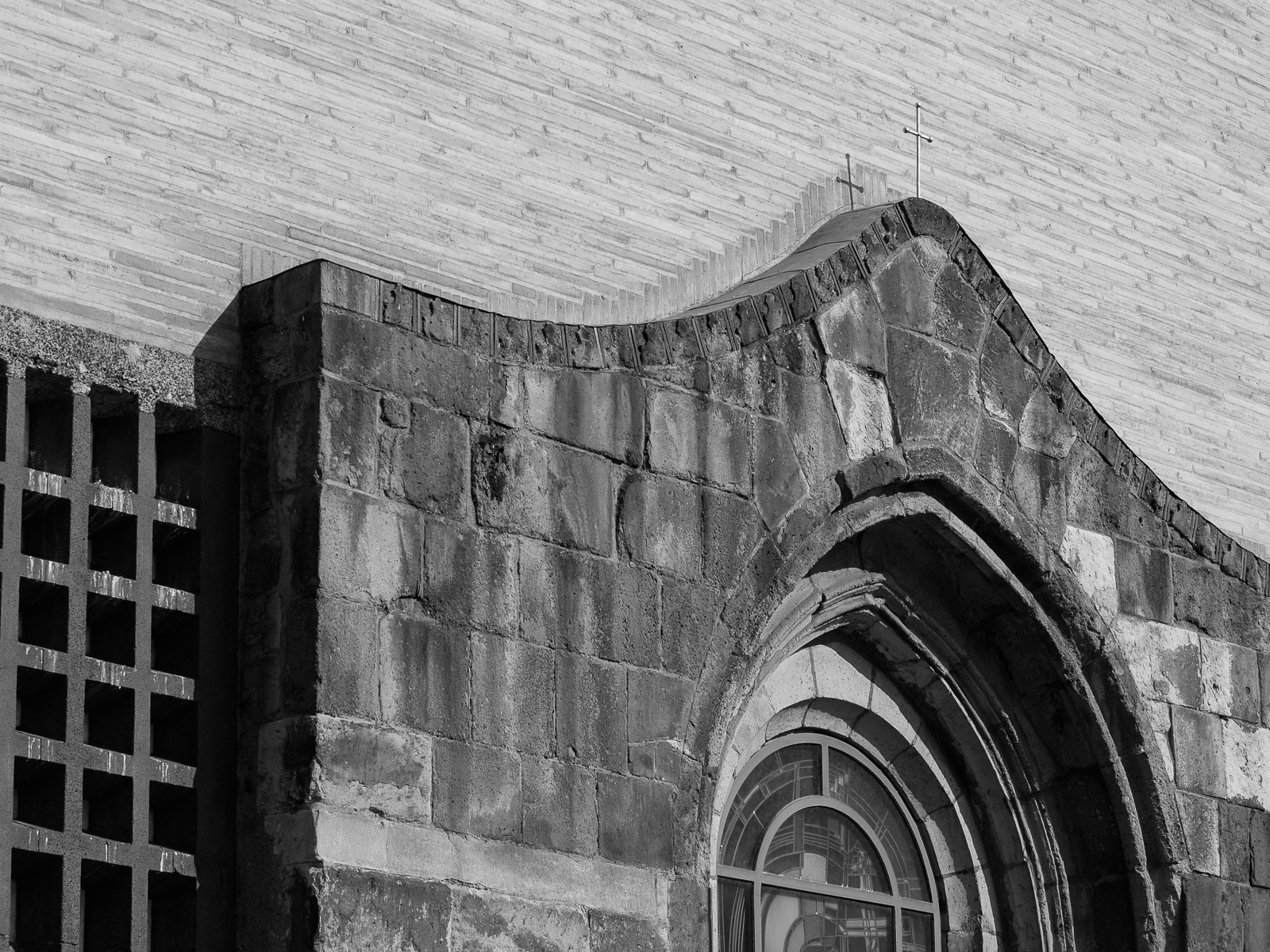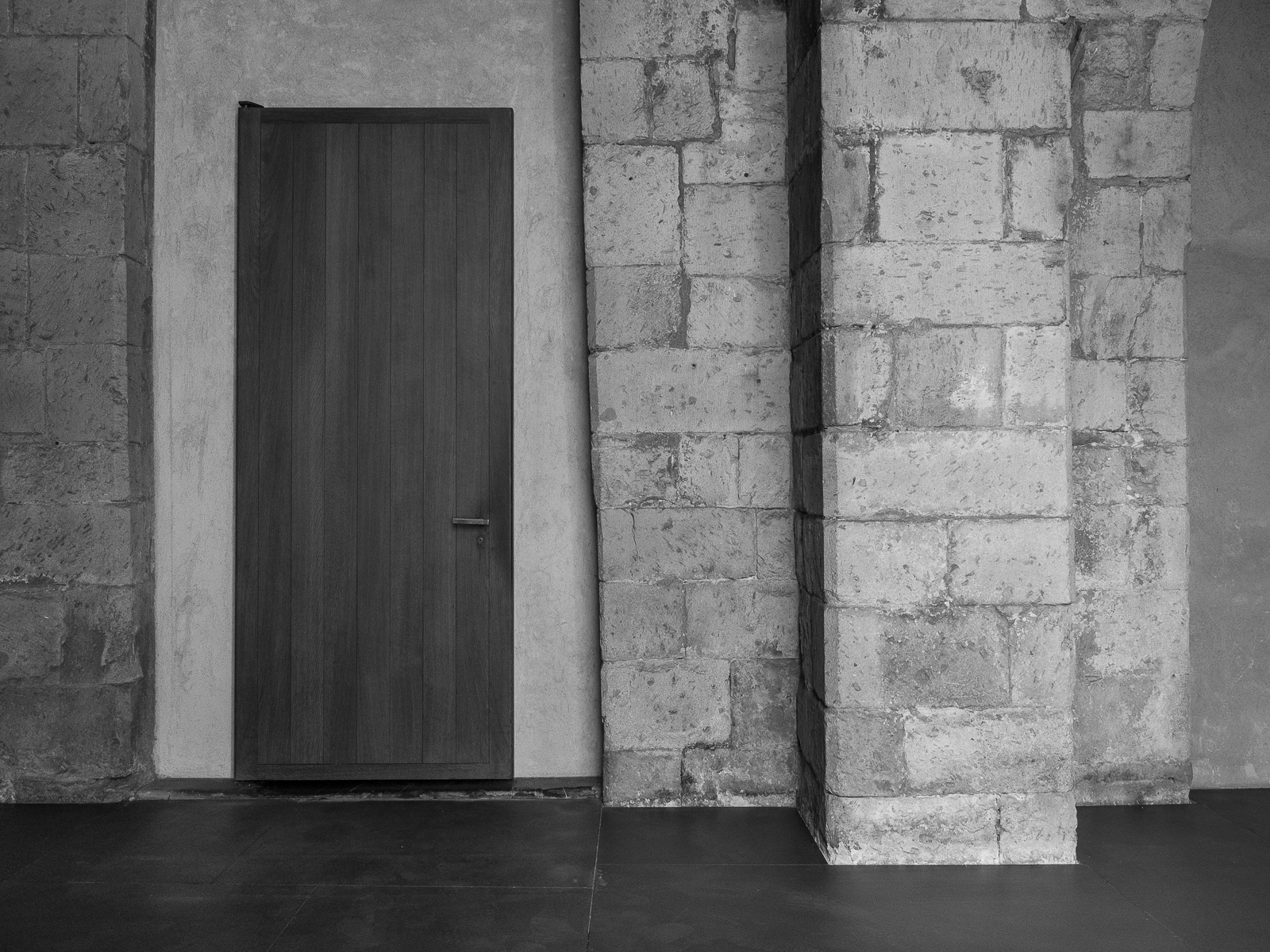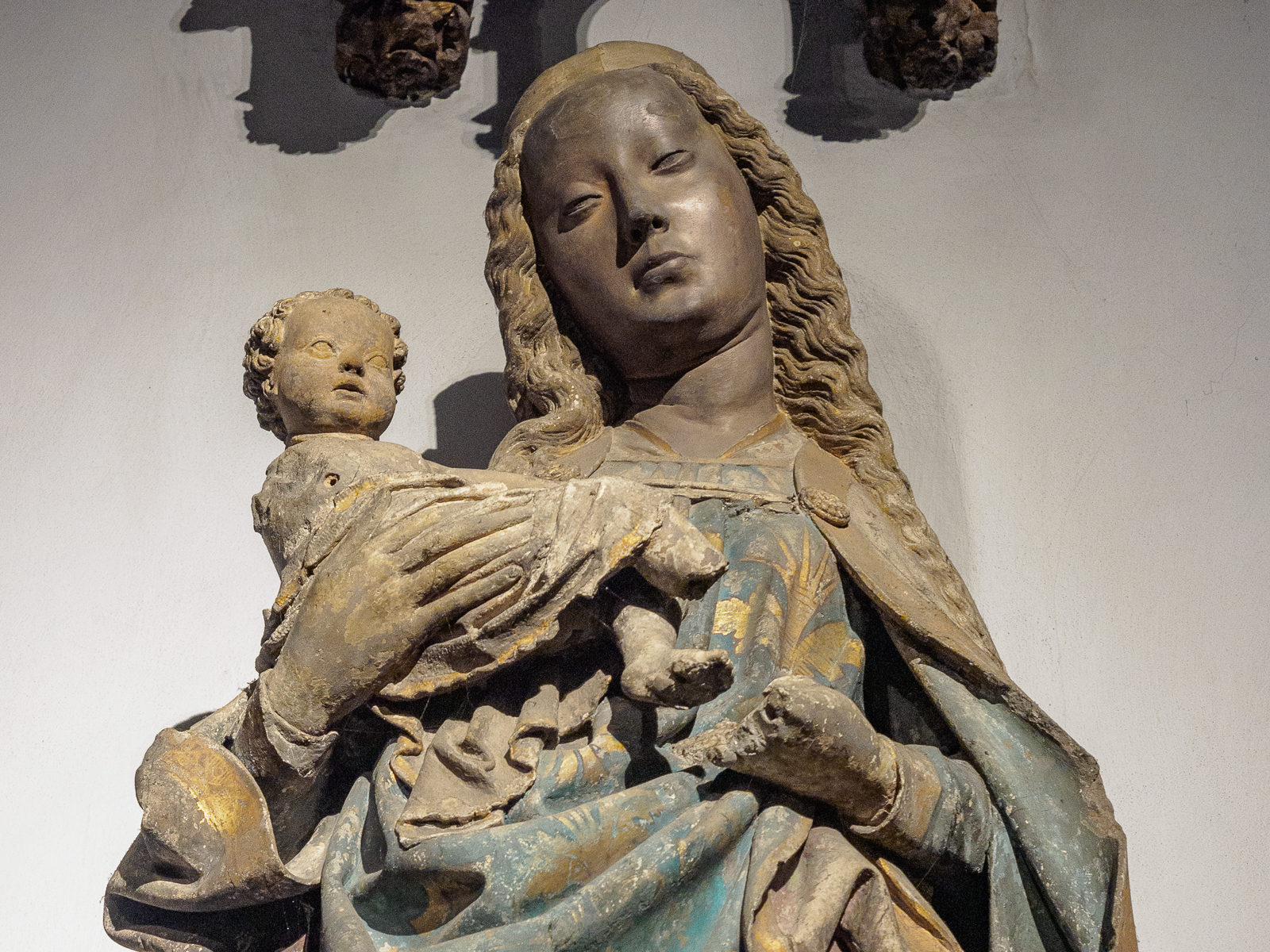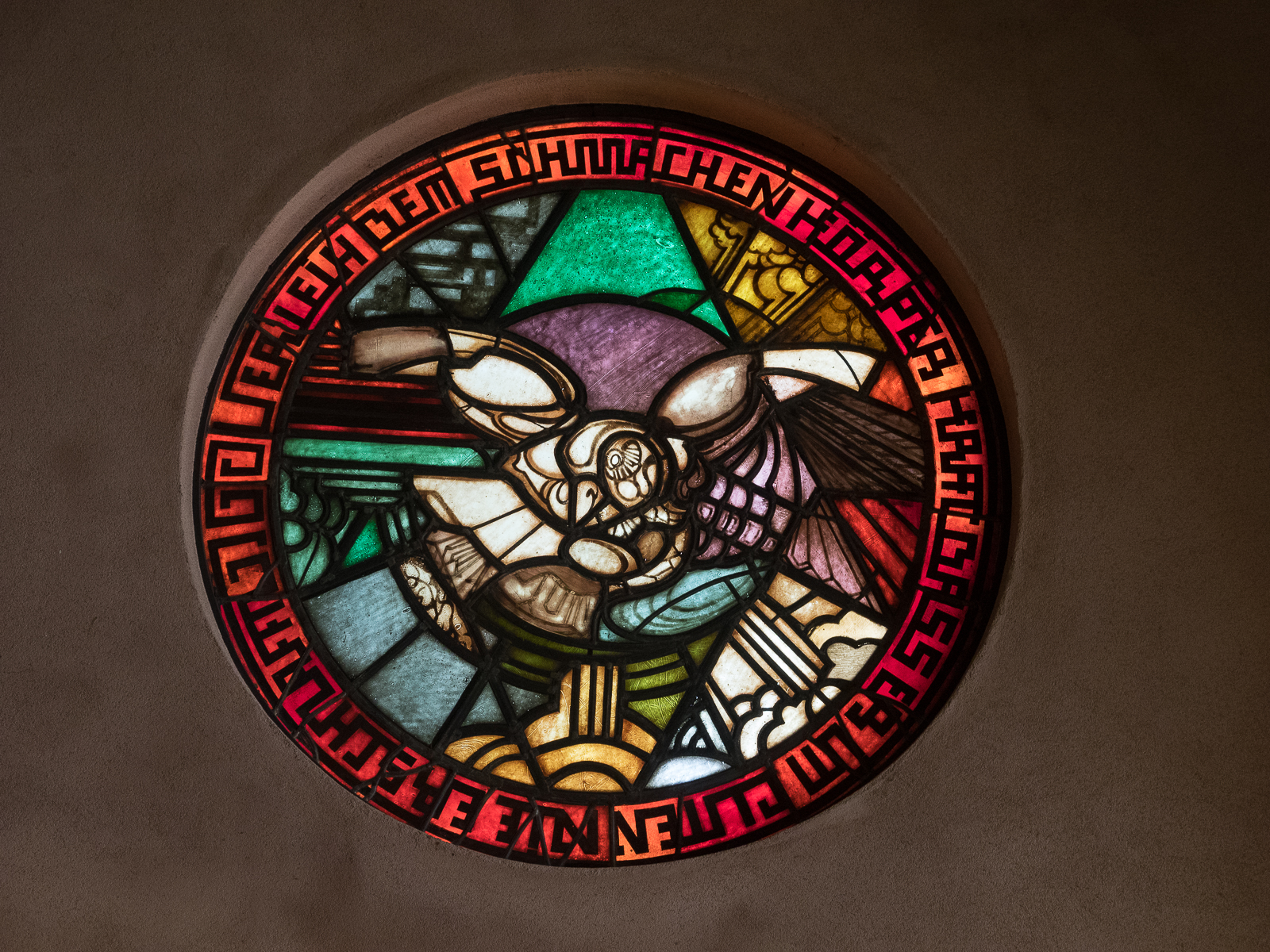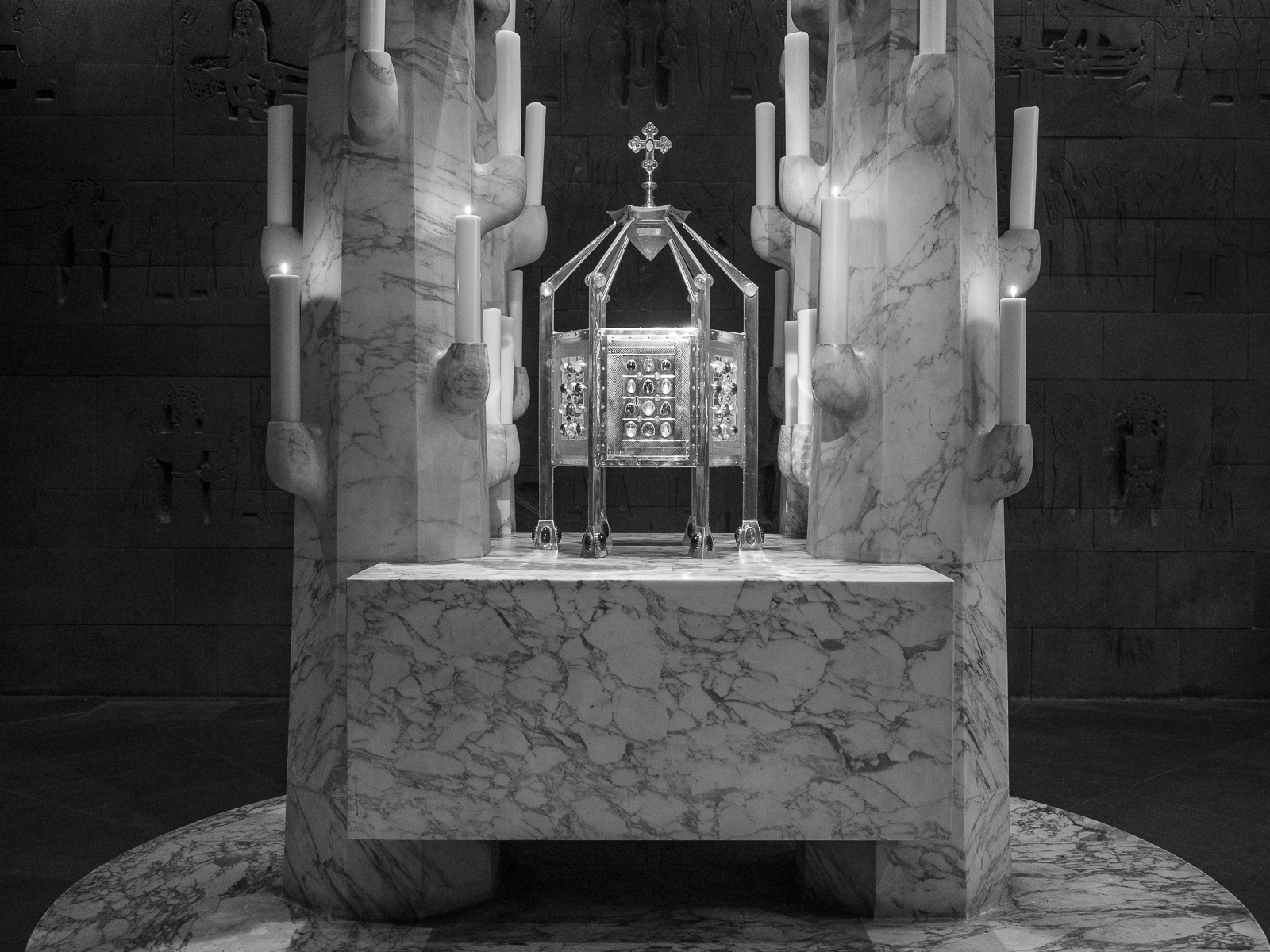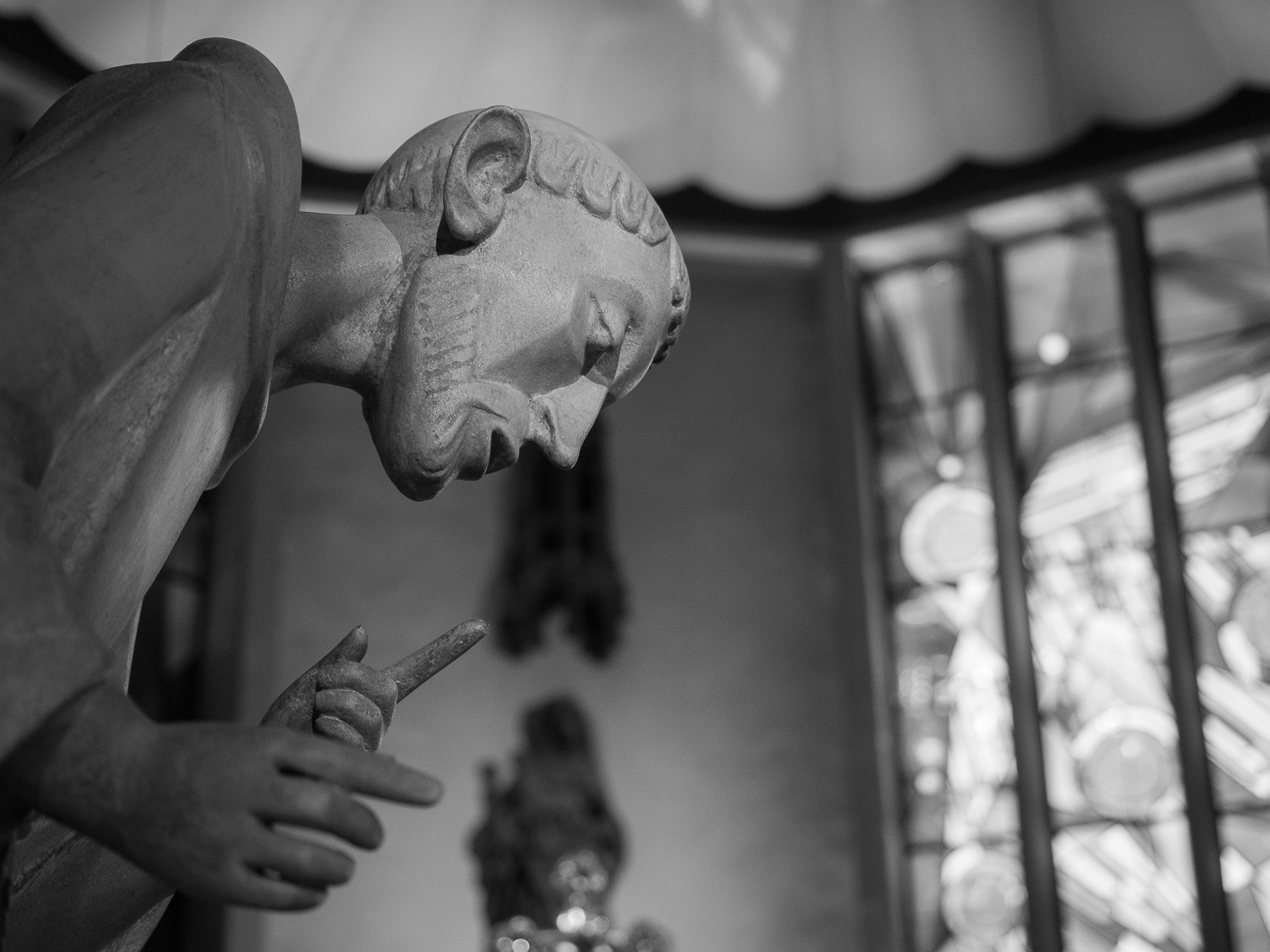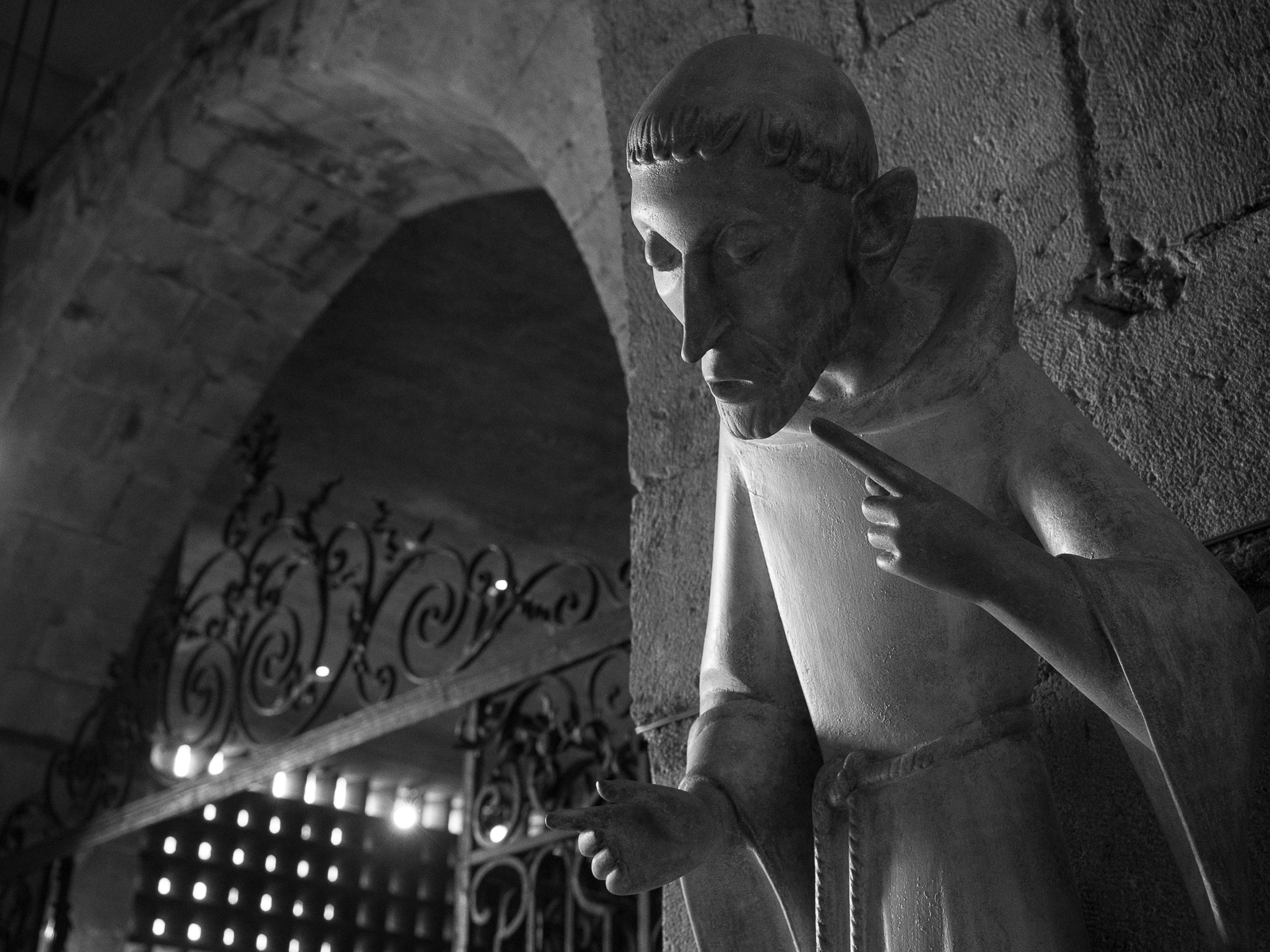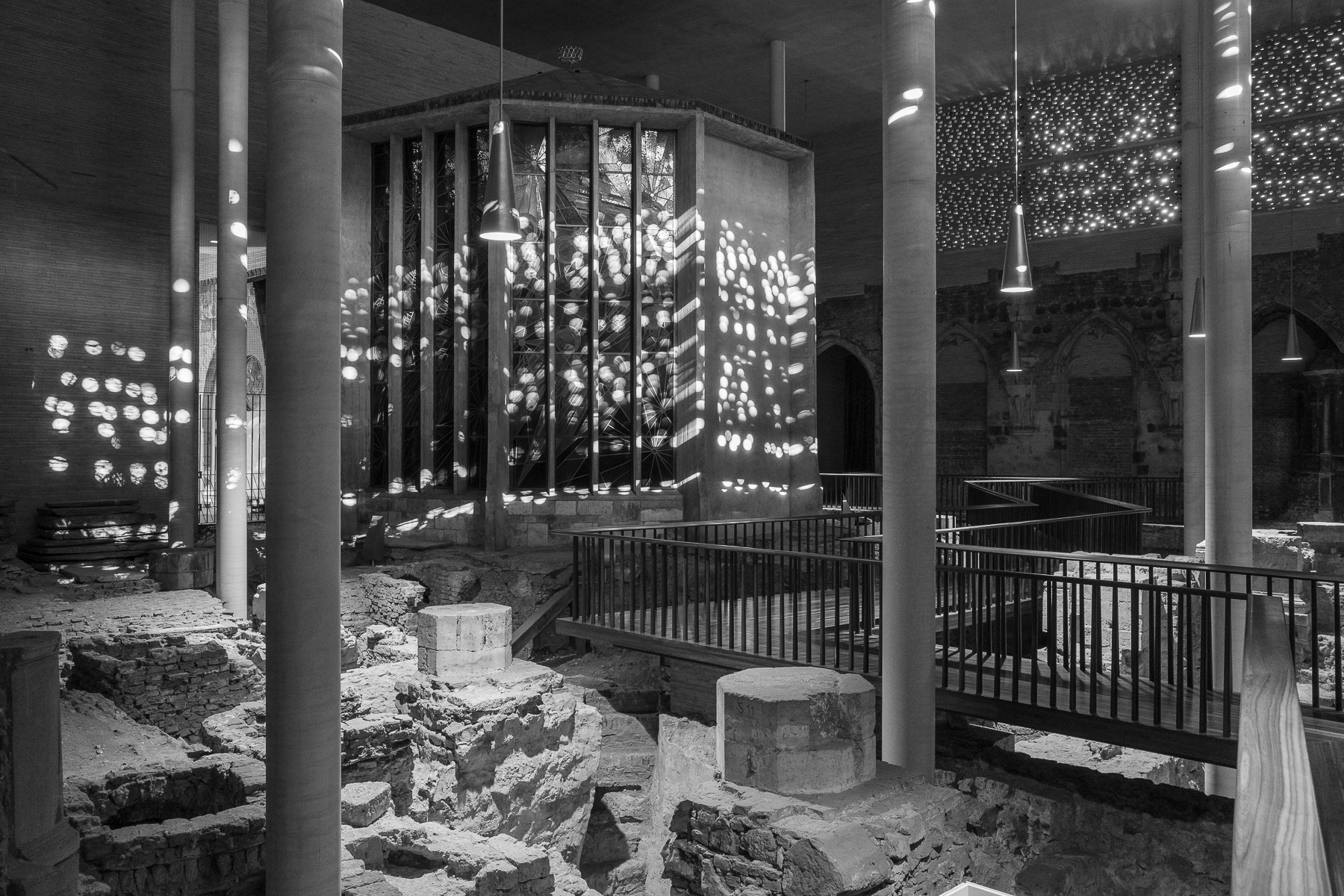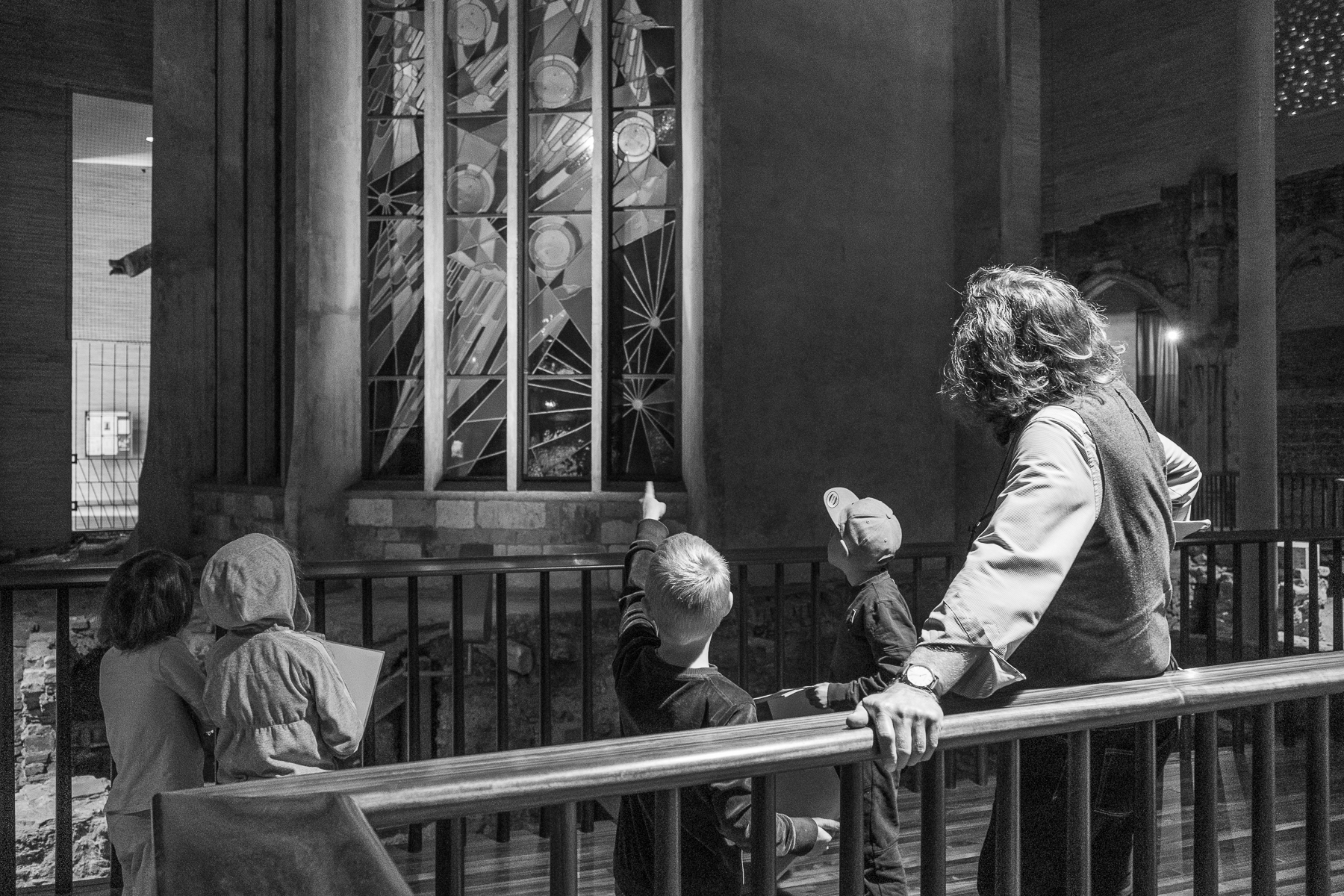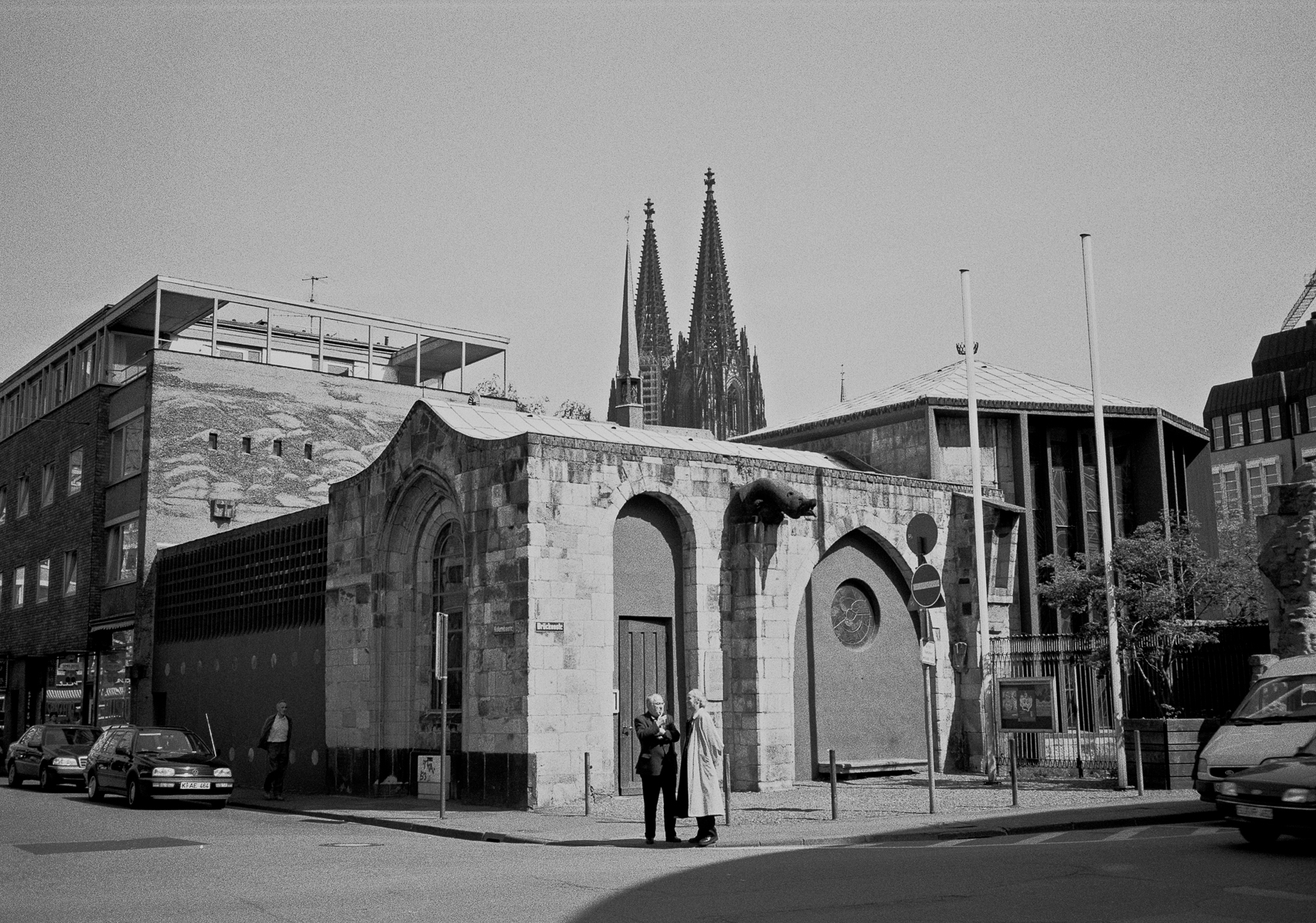Madonna in the Ruins
The “Madonna in den Trümmern” chapel, which is integrated into Kolumba but has its own independent use, was built in 1949 to a design by architect Gottfried Böhm and extended in 1956 to include the adjoining chapel to the north.
During the course of World War II, St. Kolumba church was nearly entirely destroyed. Only parts of the exterior walls, the stump of a tower, and the figure of the Mother of God standing at the northeast pillar of the nave remained intact. This “Madonna in the Ruins” soon became venerated as a sign of hope to countless believers. Immediately after the war ended, the senior priest at the time, Joseph Geller (1877-1958), devoted himself to the task of a new modern building. With this in mind, he contacted the architects Rudolf Schwarz (1871-1961) and Dominikus Böhm (1880-1955). Finally, on December 8, 1949, the foundation stone was laid for a small chapel. The plans were designed by Dominikus Böhm’s son Gottfried (born 1920), marking the chapel as his first individual, solitaire building. In addition to the late-Gothic “Madonna in the Ruins” and an excellently preserved late-medieval pieta, it is the modern works of art, commissions for which go back to Josef Geller’s many contacts to artists, which make up the high quality furnishing of this jewel. At the gable end of the choir, initially glazed with clear glass, there are eight small windows, which frame the figure of the Virgin Mary, and show angels making music, after a design by Ludwig Gies (1887-1966). Originally these had been created for the stairway to the organ loft in the old church. The “Window of the Holy Spirit”, a tondo form by Jan Thorn Prikker (1868-1932), was integrated into the south wall. It had been made in 1911 for the chapel of the Gesellenhaus in Neuss. This had been the first commission Geller gave to the expressionist glass painter, who would become very well known only a little later. Fortunately, after the window in Neuss had been removed by Geller’s successor, Geller was able to purchase it back again. Built into the walled-up former main entrance to the church, at the west side of the chapel, the “Window of St. Catherine” has been placed. It had been made already in 1943 by Georg Meistermann (1911-1999), but had no longer been installed in the old church during the war. At the north wall transition to the octagon, the figure of ´”St Anthony preaching to the fish”, created by Ewald Mataré (1887-1965) has been placed. Böhm himself designed the altar made of basalt, elevated on three steps, in the form of a cushion capital, also carving a bear in basalt for the west façade of the chapel. According to legend, the bear allegedly protected St. Kolumba. On 7 December 1950, the chapel was dedicated. In 1954, the choir windows were installed, portraying a choir of angels, which had been designed by Ludwig Gies and carried out by Oidtmann in Linnich (replacing the eight small windows on the east wall). Since that time, the light yellow circles with 34 angel heads have been distributed over the strips of windows structured by slim ribs of concrete. Their diagonal arrangement in mirror symmetry has the effect of concentrating on the space that refers to the Madonna. As early as 1957, an extension to the north, the Chapel of the Sacrament, was dedicated. To furnish it, Gottfried Böhm designed an altar and four candle stands that were as high as the room and made of a whitish-gray veined marble. On top of the altar a tabernacle was placed that had been made by Elisabeth Treskow (1898-1992), its gilt housing seeded with precious and semi-precious stones. The east wall of the Chapel of the Sacrament was designed by Gies’s student, Rudolf Peer (born 1932). It contains the Stations of the Cross, chiseled into the basalt wall. In the ensuing years, Gottfried Böhm developed a series of plans for the rebuilding of St. Kolumba church, taking into consideration the chapel and the ruins that still existed. This project did not develop beyond the drawing phase of the plans. In 1973, Gottfried Böhm introduced designs for a »Kolumba Institute«. The institute was conceived as a conference and meeting center for the Cologne Archdiocese. The extensive and important finds at the excavation site that were discovered at around the same time, and which were to be preserved and, ideally, made accessible to the public in a new building, made the rational use of the area more difficult, however. The pastoral duties at the Kolumba Chapel are still in the hands of the Franciscan Minorite Order today, their cloister having been established in the immediate vicinity on Kolumbastrasse Street in 1956. Before beginning the new building project and tearing down the cloister building, the order relocated to a new building on Tunisstrasse Street. The chapel itself and its artistic interior were comprehensively restored in 2003 and 2004. In addition to its liturgical use as a church for the small Kolumba parish today, it is one of the most heavily frequented places for private devotion in Cologne. This in itself is a reason why its individual use – completely independent of the museum – was one of the pre-conditions that had been stipulated by the project. Thanks to a generous private donation, the exterior lighting of the chapel windows was optimized in 2024 using state-of-the-art LED lighting technology.
Literature: Katharina Ley, Der Neubau von Sankt Kolumba in Köln durch Gottfried Böhm, Magisterarbeit (Typoskript), Köln 1987 | Stefan Kraus, Madonna in den Trümmern – Das Kolumbagelände nach 1945, in: Kolumba. Ein Architekturwettbewerb in Köln 1997, Köln 1997, S. 51-62 | Stefan Kraus/ Anna Pawlik/ Martin Struck, Kolumba-Kapelle (= Kolumba, Bd.59), Köln 2020
